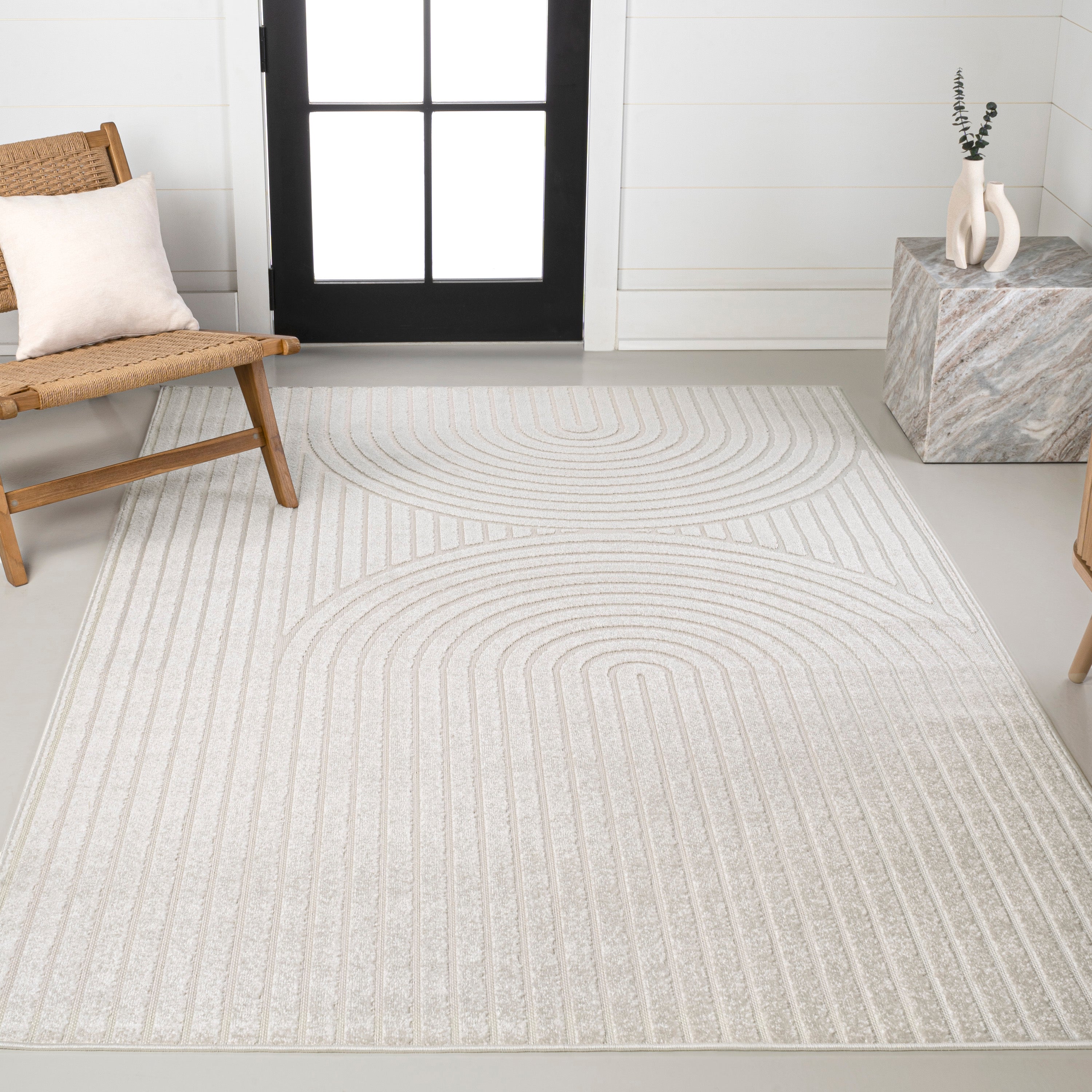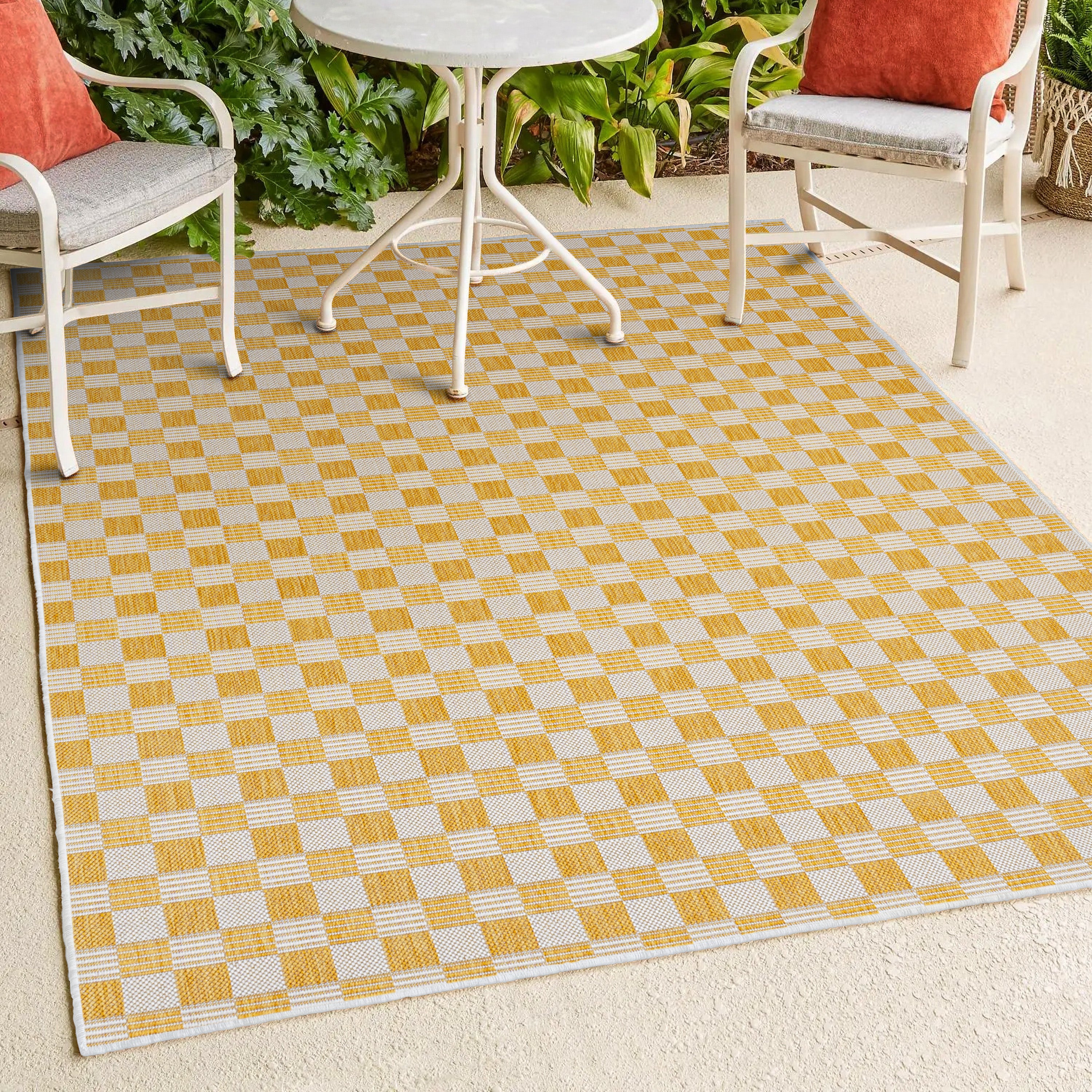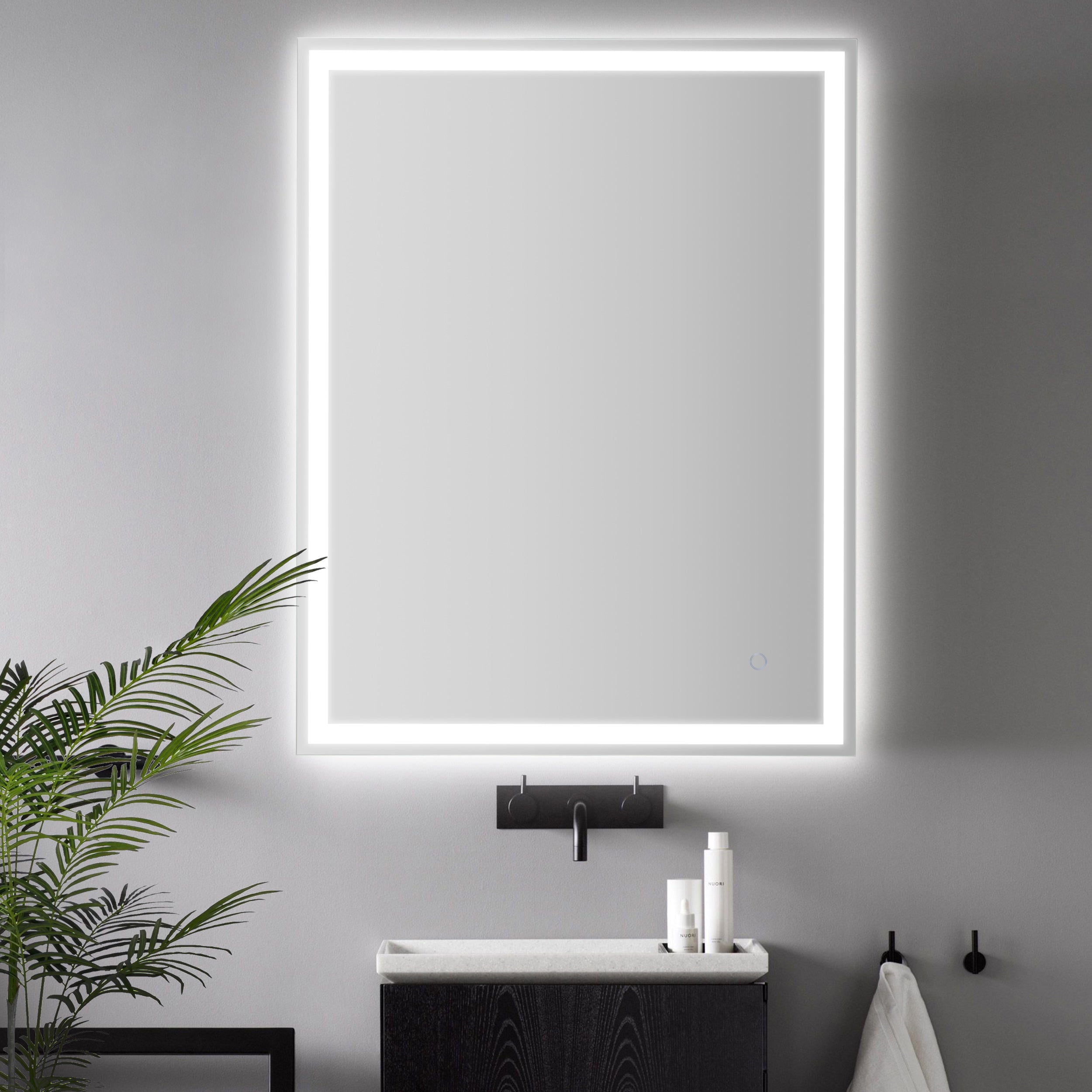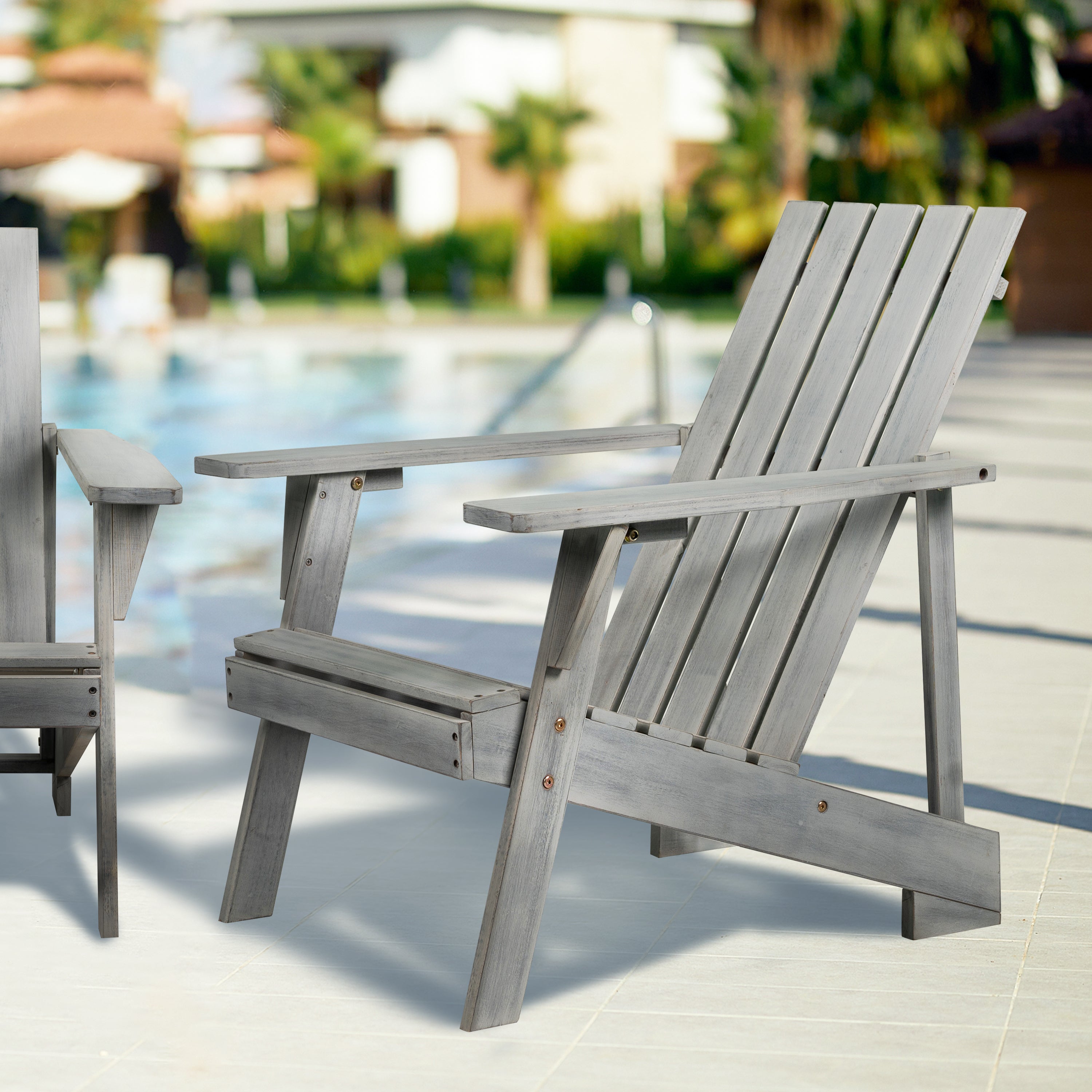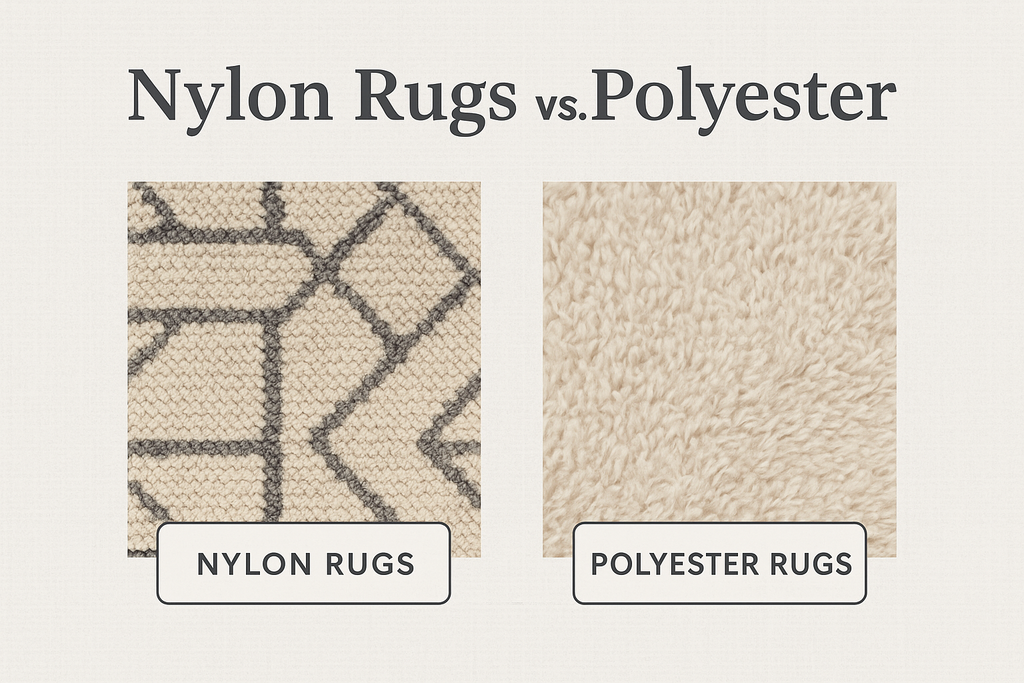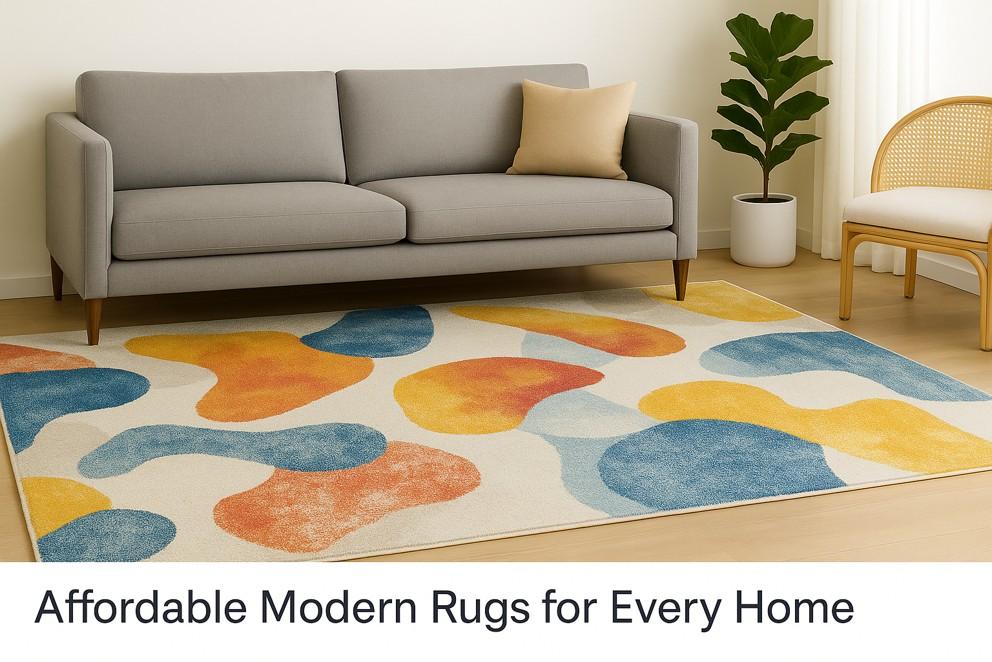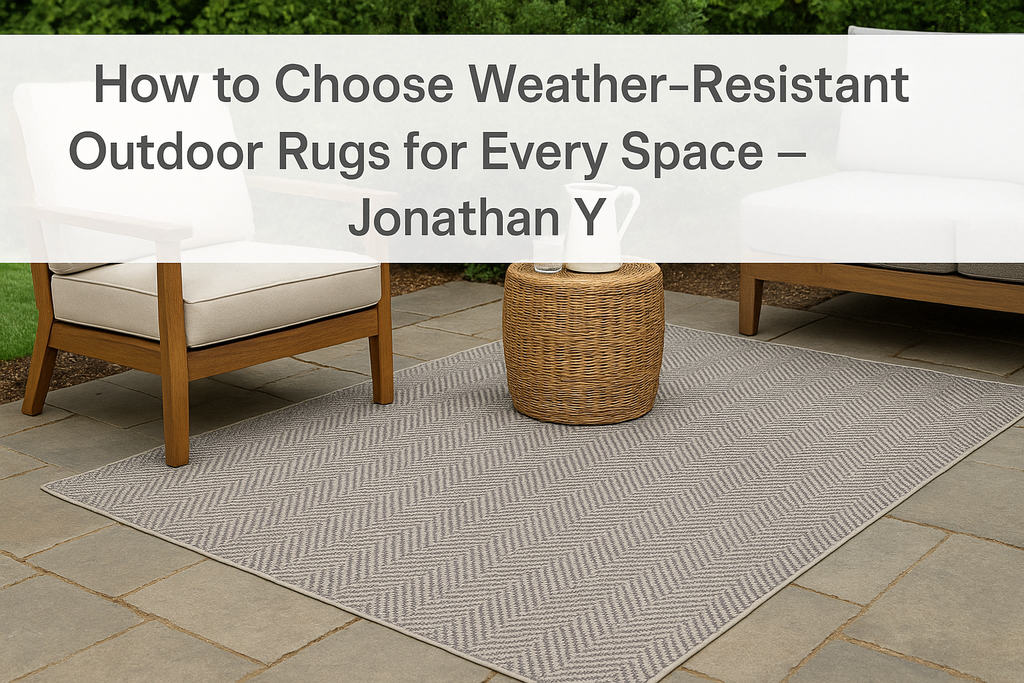Clearly, the fabric you choose for a rug significantly determines your experience regarding softness, stain resistance, durability, and cost. Out of all the synthetic flooring options, rugs made from nylon and polyester are by far the most predominant. But which is truly better?
This article intends to guide you through every aspect of nylon rugs vs. polyester rugs, including comfort, color, cleaning, cost, and more, so that you get the optimal choice for your home, whether you are decorating a flat or a large living room.
What are Nylon Rugs?
Widely regarded as one of the strongest synthetic fibers, nylon rugs have stood the test of wear and tear. First manufactured in 1935 by DuPont, nylon’s elasticity, durability, and resistance to overall wear make it ideal in places with high foot traffic such as hallways, stairs, and living rooms.
The popularity of nylon rugs can also be attributed to their ability to be dyed into rich and vibrant hues. Additionally, they are often treated with stain resistance and maintain a springy feel. They are also designed to recover from pressure within a short span of time.
What are Polyester Rugs?
Select rugs made out of polyester fibers are lightweight, visually appealing, and cost-friendly. In this day and age when sustainability is prioritized, it is good to note that modern polyester rugs are often made out of recycled plastic bottles.
As with rugs made from other materials, polyester rugs are inherently stain-resistant and do not absorb moisture. These rugs are silky to the touch and are ideal for use in bedrooms, sitting areas, or reading spaces where one seeks ultimate relaxation.
Nylon Rugs vs. Polyester: Head-to-Head Comparison
Durability and Wear-Resistance
If a rug is going to last through years of use, especially in a household with children or pets, then a nylon rug is the way to go. Rugs made with nylon fiber tend to keep their shape over time due to their elasticity and strength.
In contrast, a rug made with polyester will be less expensive, and although it doesn’t perform as well under high-traffic areas, it does feel soft. For example, polyester rugs placed under dining chairs or in busy corridors tend to get worn out a lot quicker than nylon rugs do.
Conclusion: Active households that require a rug with longevity and durability paired with resistance would benefit from a nylon rug.
Stain Resistance
Polyester provides an edge in dealing with accidental spills. Spills are easier to address with polyester because the fibers are hydrophobic and repel liquids as opposed to absorbing them. This makes polyester an ideal fabric for households with pets or children.
Nylon does tend to absorb some moisture; however, it is often treated with stain-resistant coatings which help repel common stains. These treatments are not permanent and can wear out with time.
Conclusion: For polyester, natural stain resistance works best in dining rooms or play areas.
Colour Vibrancy and Fade Resistance
Both rugs made out of nylon and polyester can be dyed and are available in rich colors. Nylon, however, seems to have an advantage as it retains color deeper and thus is better in color precision and richness, especially with intricate patterns or multi-colored rugs.
Rooms that receive direct sunlight are not a problem for polyester rugs as they do not fade due to sunlight exposure. However, polyester rugs may not display patterns with the same crispness as nylon.
Conclusion: Nylon wins for color saturation, while polyester takes the prize for fade resistance in sunlit spaces.
Comfort and Texture
When it comes to softness, polyester rugs provide a silky touch and a luxurious feel, warmed underfoot. They are vastly cheaper when compared to natural silk or viscose. For this reason, these rugs are best suited for bedrooms, nurseries, or lounge areas.
Nylon is springier and more structured, which is a bit softer, but more supportive. Some high-end nylon rugs incorporate advanced weaving methods that improve softness without compromising strength.
Conclusion: Polyester wins for softness and comfort; while nylon wins for support and structure.
Maintenance and Cleaning
Daily maintenance of cleaning polyester rugs is quite simple. Polyester rugs repel water which means most spills can be wiped before turning into stubborn stains. Additionally, many polyester rugs are machine-washable, simplifying maintenance even further.
The same goes for nylon rugs; they are fairly easy to clean, particularly when equipped with a stain-resistant coating. However, because nylon is more absorbent, it may require deeper professional cleaning over time.
Conclusion: Polyester wins for ease of daily maintenance; while nylon is more rugged and low-risk in high-use spaces.
Cost and Value
When it comes to pricing, polyester rugs offer significant savings compared to nylon rugs, making them an ideal choice for students, renters, or anyone decorating on a budget. These individuals can enjoy the aesthetic and tactile qualities of soft furnishings without needing to spend excessively.
While nylon rugs cost more, their superior durability means they may be a better value over time, particularly for buyers intending to reside in one place for many years.
Conclusion: Both polyester and nylon rugs have their place. For short-term spending flexibility, polyester prevails; for long-term investment, nylon reigns supreme.
Sustainability
Due to the significant use of recycled PET plastic in most polyester rugs today, they are among the most sustainable options in synthetic flooring. Manufacturers often promote polyester rugs as part of their green or sustainable product lines.
The eco-friendliness of nylon is less favorable. The consumption of energy and chemicals needed for its production is well above average. Though there are recyclable nylon options, they are not yet mainstream.
Conclusion: As a result of these factors, polyester wins for sustainability and overall environmental impact.
Best Rooms for Nylon Rugs
In areas where durability is essential, nylon rugs perform best:
-
Living Rooms: These spaces see high foot traffic, and the social activity is accompanied by furniture movement.
-
Hallways & Entryways: These areas see daily wear and tear.
-
Stairs: The springy surface bounces back from impact and pressure.
-
Playrooms: Endure the jumping, running, and roughhousing from children.
Best Rooms for Polyester Rugs
For areas where softness and cost-effectiveness are priorities:
-
Bedrooms: Relaxing and barefoot comfort makes it ideal to soft underfoot.
-
Guest Rooms: A touch of affordable yet luxurious use for infrequent purposes.
-
Nurseries: Gentle surface and texture, ease of cleaning, and softness makes it appealing to children.
-
Reading Corners or Lounges: Soft coziness adds to the aesthetic appeal.
Nylon Rugs and Pets
For pet owners, durability matters. Nylon rugs are resistant to scratches, crushing, and paw traffic. Unlike polyester, pet accidents, spills, or messes are easier absorbed by nylon fabrics.
Many nylon rugs also come treated with anti-odor and stain blocking technologies, making them fit better for pets that shed, scratch, but don’t frequently miss the litter box.
Polyester Rugs and Pets
For households with young pets, or those prone to accidents, spillages, polyester rugs being naturally stain-resistant will prove invaluable. Their ease in spot cleaning and odor resistance eases maintenance, but their tendency to mat under pressure from heavy pet activity renders them less durable.
Which One Should You Choose?
Should your designing goals be set on resilience, high traffic performance or simply a long span of years to withstand usage, the choice is nylon. It's engineered to last, and while the upfront cost is higher, it pays off over time in performance and wear resistance.
If your priorities are comfort, budget, or cleaning ease, polyester is the best option. It provides value for money, warmth, and easy maintenance.
Still pondering? Think about the following:
-
Are there children, pets, or a lot of walking traffic? → Choose nylon.
-
Would you call it luxury if it comes at a lower price? → Stick to polyester.
-
Is it meant for short-term use or frequent redesigns? → Polyester excels.
-
Need an enduring flooring asset for investment? → Nylon is optimal.
Conclusion: Nylon Rugs vs. Polyester
Both nylon and polyester rugs are great options for modern-day houses. Neither is truly “better” than the other, as it hinges on personal preferences, finances, and needs. For tough durability with unmatched color retention, go for nylon. For soft comfort, affordability, and style, polyester shines brighter.
Regardless of the material chosen, proper maintenance, such as consistent vacuuming and careful room placement relative to fibrous material, is essential to maximize the longevity of the rug.
As more advancements are made in the field of technology dealing with synthetic fibers, we anticipate rugs that combine desirable attributes of both nylon and polyester—comfort, strength, and style all in one.






